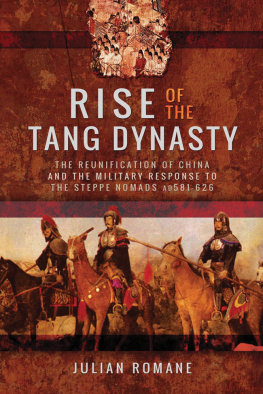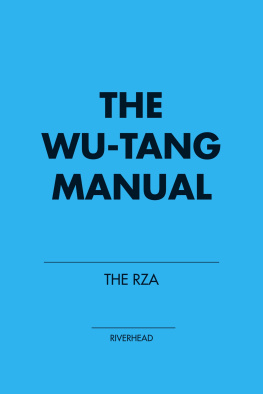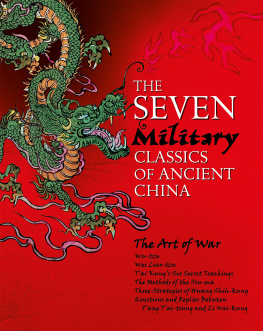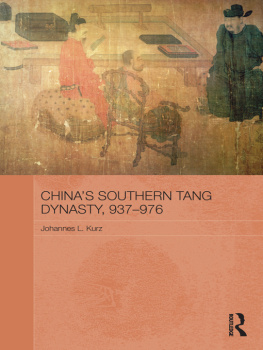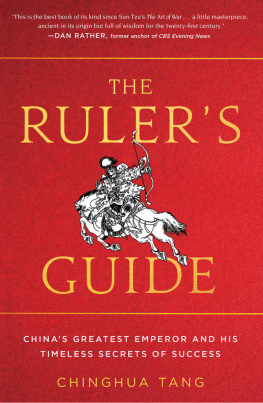
Rise of the Tang Dynasty
Rise of the Tang Dynasty
The Reunification of China and the Military Response to the Steppe Nomads (AD581-626)
Julian Romane
First published in Great Britain in 2018 by
Pen & Sword Military
an imprint of
Pen & Sword Books Ltd
47 Church Street
Barnsley
South Yorkshire
S70 2AS
Copyright Julian Romane 2018
ISBN 978 1 47388 777 0
eISBN 978 1 47388 779 4
Mobi ISBN 978 1 47388 778 7
The right of Julian Romane to be identified as Author of this work has been asserted by him in accordance with the Copyright, Designs and Patents Act 1988.
A CIP catalogue record for this book is available from the British Library.
All rights reserved. No part of this book may be reproduced or transmitted in any form or by any means, electronic or mechanical including photocopying, recording or by any information storage and retrieval system, without permission from the Publisher in writing.
Pen & Sword Books Limited incorporates the imprints of Atlas, Archaeology, Aviation, Discovery, Family History, Fiction, History, Maritime, Military, Military Classics, Politics, Select, Transport, True Crime, Air World, Frontline Publishing, Leo Cooper, Remember When, Seaforth Publishing, The Praetorian Press, Wharncliffe Local History, Wharncliffe Transport, Wharncliffe True Crime and White Owl.
For a complete list of Pen & Sword titles please contact
PEN & SWORD BOOKS LIMITED
47 Church Street, Barnsley, South Yorkshire, S70 2AS, England
E-mail:
Website: www.pen-and-sword.co.uk
Acknowledgements
Special Thanks
I need to thank my editor, Philip Sidnell, for his interest and encouragement. I deeply appreciate his handling of my work. I also want to thank Matt Jones, Amy Jordan, and Clive Watson of Pen & Sword for their care and hard work making my manuscript into a book.
I also want to thank two people who are long gone but who directed my attention to the beauty and importance of the Chinese people. Both were teachers at Beloit College in the early Sixties. The first is Professor Gustav Johnson, who spent the Second World War in China. He brought an immediacy and broader vision of current events in China following that war. The second is that prince of historians, Bob Irrmann; always insightful, he spent time discussing the image of Chinese society pictured in Bland and Backhouses China under the Empress Dowager and lent me a copy of Der Lings Old Buddha , another image of Tzu Hsi.
I thank my wife, Judy, for her forbearance and patience that allowed me to write this book.
Any errors in this work are mine alone.
Technical Issues
D ealing with Chinese history, one is faced with numerous technical problems. Firstly, the transliteration of Chinese words into European tongues is not only controversial, but often it represents a political orientation. The older Wade-Giles method was used by the Kuomintang of Chiang Kai-shek (whose name is his personal transliteration) and often stands in opposition to the Zhongguo Gongchandang of Mao Zedong. The Chairman, Mao, instituted an official transliteration format: Pinyin. There are arguments over which method is better, but often the result is more of a political decision than anything else. Those who oppose Red China use Wade-Giles; those who support Red China use Pinyin. Over the years, however, tensions between the Peoples Republic of China and the Atlantic states have lessened. The scholars in the Peoples Republic have long been producing high-quality historical works. Clearly, the future of Chinese historical investigation is in their hands. So I use Pinyin.
Secondly, translations of Chinese texts leave a lot to be desired. Many translators use exotic English words to translate Chinese characters; for instance, erudite scholar, which could just as accurately be accomplished scholar. I try to use simple English to translate Chinese because, in my experience, Chinese speakers want to be direct and clear. Titles are another issue. The Five Titles of Nobility - gong , hou , bo , zi , nan - are used from at least the late Shang throughout Chinese history until 1911. Tzu Hsi and her court convinced the British to translate them into English feudal titles: gong becomes duke; hou becomes marquis; bo becomes earl; zi becomes viscount; and nan becomes baron. This may have been a good idea for diplomatic usage, but it is utterly ridiculous for historical usage. Chinese history has many ins and outs, but there is absolutely nothing like medieval English feudalism in Chinese history. To call the member of the early Zhou Dynasty the Duke of Zhou makes no sense. I translate gong as Lord and Hou as Master.
As translation aids, I have found the following most useful: Rick Harbaugh, Chinese Characters a Genealogy and Dictionary (Yale, 2009); Quanyu Huang et al, McGraw-Hills Chinese Dictionary and Guide (New York, 2010); and Paul Kroll, A Students Dictionary of Classical and Medieval Chinese (Leiden, 2015).
Introduction
China and her Military
I n the early twenty-first century, the Peoples Republic of China is a respected military power. But since the mid-nineteenth century, European commentators have derided and ridiculed Chinese military operations. The Chinese Empire did suffer defeat after defeat at European and then Japanese hands. Yet few looked at the objective factors causing these defeats, because as long as they continued, it didnt matter to anybody. A typical opinion of the Chinese military was: [I]t was crystal clear to even the most unreconstructed Chinese that firecrackers, gong beating, spears, and generals far to the rear in yellow mandarin coats were not the answer to western arms (Kemp Tolley, Yangtze Patrol , p.9). In actual fact, a close look at the European-Chinese wars in the nineteenth century shows that the Chinese did not do as bad as later accounts assume. We should recall that in 1808, the British decided that they would occupy Macao before the French did, and sent six warships with two companies of 30 Regiment, two companies from the Bengal European Regiment and with 600 sepoys to occupy the place. The local Chinese authorities mobilized their forces and the British saw that they were too strong to attack, but they would also repel the French. If the British in 1842 had brought part of Wellingtons army and Nelsons fleet to Canton, the Chinese would have fought them to a stalemate if not outright defeat. Chinese matchlocks were not like those of the Thirty Years War; they were light, compared to the Brown Bess, mass-produced and cheap. Chinese artillery was as good as most European guns. The Chinese ships, a green water navy to be sure, were manoeuvrable and hardy.
Two main factors lead to the Chinese defeat in 1842: British military improvements and Qing political difficulties. British innovations in weapons and machinery since 1815 stunned the Chinese. Elite European troops were using percussion muskets, and the Europeans also had exploding artillery shells. Then there was the Nemeses , a steel (not iron-clad) steam-driven ship with two cannons, shooting explosive shells. It was a weapon unlike anything produced before. It amazed the Chinese, as it did the Europeans. More significant in the long run, the Qing Dynasty was not a Chinese institution but was the instrument of the Manchu ruling nationality dominating and oppressing the Han majority. Chinese men had to shave their forehead and grow the rest of their hair long in a pigtail (the queue). The Manchu favoured certain Han men, making them honorary Manchus, but the vast majority of Chinese peasants and gentry, merchants and soldiers were second-class subjects of the Qing Dynasty. As far as the Manchu rulers were concerned, the heart of their empire was Manchuria and northern China. Mongolia and the steppe lands were more important to the dynasty than the lands south of the Yangzi River. The fact that the Western pirates were attacking the south-eastern ocean coast was no more significant to the imperial regime than steppe pirates attacking Tibet.
Next page
